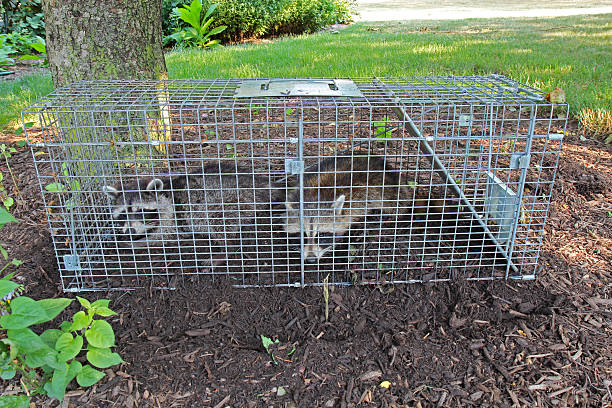How Wildlife Control Teams Handle Squirrel and Raccoon Season

Squirrels and raccoons get busy as seasons change. They look for warm, dry, and safe spaces. Sadly, that can mean your attic, soffits, or garage. When they move in, they chew wires, tear insulation, and leave waste. Yet there is a calm path forward. With simple steps, steady timing, and kind methods, teams guide homes back to normal. Moreover, they prevent repeat visits in innovative ways. Above all, they work with the rhythms of weather and youth. Therefore, they keep families safe while protecting wildlife. In this guide, we explain how crews plan, act, and follow through with wildlife control in Philadelphia County PA, so your home stays quiet and healthy.
1. Early-season scouting with wildlife control in Philadelphia County PA
Before nests form, teams walk the exterior and roofline. They check vents, gaps, and chew points. Then they scan trees and wires that may act like bridges. Because timing matters, early checks catch minor issues fast. As a result, fixes cost less and cause less stress.
They also note food draws, like open bins and pet bowls. Next, they match signs to likely species and routes. Finally, they set a simple plan that fits the season and your home.
Key early checks:
- Loose soffits, lifted shingles, and torn screens
- Gaps at ridge vents, chimneys, and attic fans
- Tree limbs within five to eight feet of the roof
2. Humane trapping and one-way exits
During peak movement, crews choose humane tools. When pups or kits are inside, they are protected from stress. Instead, they use one-way doors on main routes. Consequently, adults are unable to exit and return. When babies are present, technicians reunite families outside in a warm, safe box. Then they seal the entry once the space is clear.
“Humane steps work best when matched to season and species. Patience and timing prevent harm and prevent repeat issues.”
Additionally, teams log each step with photos. Therefore, you can see what changed and why it worked. This record also aids in future maintenance.
3. Attic and roof checks, plus a quick sign table
Inside the attic, crews look for trails in insulation, stains, and gnaw marks. Because heat rises, odors and moisture can spread fast. Thus, they test air with meters and inspect ducts. Outside, they inspect valleys, eaves, and roof caps. Afterward, they map each path to a repair step.
Quick signs and what they mean
| Sign you notice | What it means |
|---|---|
| Footsteps at dawn or dusk | Likely squirrels or raccoons moving routes |
| Insulation matted in lines | Active travel paths between the entry and nest |
| Dark marks near a gap | Oils from fur at a repeat entry point |
| Small droppings in piles | Possible squirrel feeding site or stash |
| Larger scattered droppings | Possible raccoon latrine behavior |
Furthermore, trained teams share simple care steps you can keep using.
4. Baby season protocols
Seasonal young need special care and calm handling. Therefore, teams adjust speed, tools, and timing.
Squirrels
Squirrels often have litters in late winter and late summer. So, techs listen for soft chirps and nesting sounds. Then, they find the nest box spot and plan a gentle move. After family removal, they seal gaps and add guards.
Raccoons
Raccoons tend to den in spring. Because mothers defend kits, careful steps reduce risk. Technicians use low-stress methods, then reunite outside. Finally, they secure vents, cap chimneys, and add one-way exits as needed.
“Respect for the young is not only kind; it also prevents damage from panicked adults. A calm plan protects both home and wildlife.”
Additionally, wildlife control in Philadelphia County PA, teams share what to expect day by day.
5. Sanitation, odor control, and air safety
After removal, cleanup matters. Waste can hold parasites and bacteria. Therefore, crews place the area under safe containment. Then they bag soiled insulation and wipe hard surfaces. Next, they apply EPA-listed cleaners with correct dwell times. They also treat ducts if needed and swap filters.
Because smells can invite returns, they use odor control and enzyme steps. Moreover, they check humidity and dry damp zones. As a result, the attic returns to a healthy state. Finally, they document the area so you have a clear record. This stage often pairs well with wildlife control in Philadelphia County PA, and follow-ups.
6. Homeowner prep that helps teams move faster
Clear prep makes each visit smooth. First, place pets in a safe room. Then, unlock side gates and garage doors. After that, set aside attic access and a small floor space.
Simple prep checklist:
- Mark any sounds on a note with the time of day
- Move cars so ladders can reach the eaves
- List recent storms or tree work
- Bag indoor trash and close lids outside
- Turn on exterior lights for evening checks
Additionally, keep bins shut and feed pets indoors. Consequently, your home feels less inviting to visitors.
7. Seasonal timing, weather shifts, and repeat proofing
Weather drives movement. During cold snaps, raccoons seek warm, high spaces. During heat waves, squirrels follow shade. Therefore, schedule checks after major storms and before prolonged periods of deep cold. Moreover, crews return to confirm that the seals have not shifted.
“The right day matters. Dry weather helps sealants cure. Calm wind increases ladder safety and accuracy.”
Because seasons repeat, the plan repeats. As a result, minor tune-ups stop big surprises. This rhythm pairs well with wildlife control in Philadelphia County PA, during seasonal maintenance visits.
8. What you gain from a steady plan
You want fewer surprises, lower costs, and safer air. With a steady plan, you get all three. First, early scouting finds minor issues. Then, humane removal keeps stress low. Next, sealing and cleanup protect the attic and ducts. Finally, simple habits can reduce the need for future visits.
Your takeaways:
- Clear steps you can follow each season
- Safer wiring, cleaner insulation, and better airflow
- Fewer night sounds, fewer roof issues, and calmer mornings
Additionally, a log of work helps with insurance and real estate checks. In short, wildlife control in Philadelphia County PA, becomes an easy part of home care.
9. Practical tools and materials crews rely on
Professionals use gear that fits the task and season. First, they bring camera scopes for tight spots. Then they carry meter sticks for depth checks in insulation. Moreover, they pack chimney caps, ridge guards, and vent covers sized for your home. Because safety matters, they use tie-offs, stable ladders, and soft-glove handling. After removal, they seal with weather-rated materials that flex but remain in place.
Common materials in a service van:
- One-way doors sized for squirrels and raccoons
- Galvanized screens for vents and gaps
- Low-odor cleaners and HEPA vacuums
Afterward, wildlife control in Philadelphia County PA, teams schedule a quick recheck to confirm everything holds.
Keeping your attic quiet from here
When the season shifts again, a calm plan keeps your home steady. With simple habits, tuned timing, and kind steps, you stay ahead of noise, mess, and stress. If you’re looking for a clear and humane approach that suits your home and schedule, Media Animal Control can carefully plan your next season.



